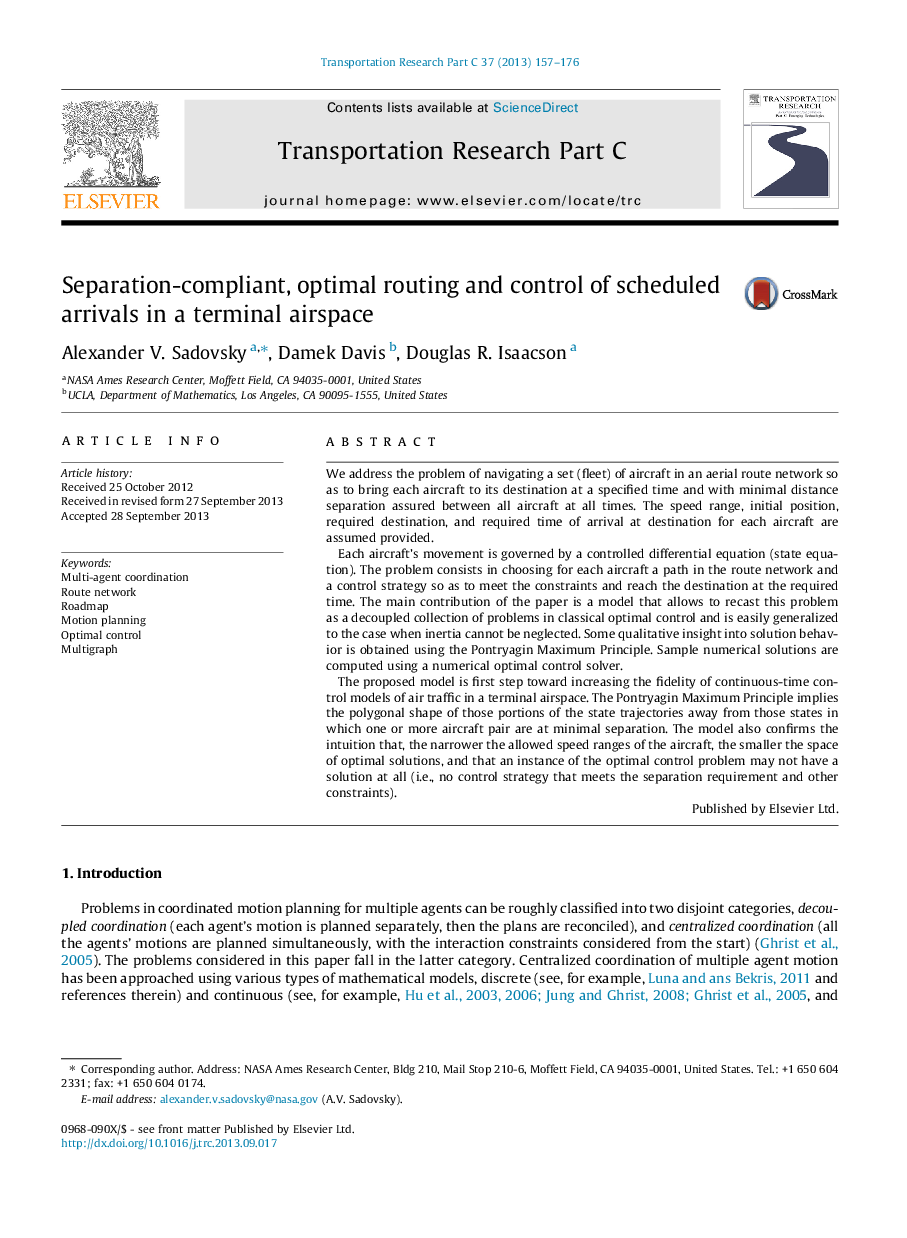| Article ID | Journal | Published Year | Pages | File Type |
|---|---|---|---|---|
| 525341 | Transportation Research Part C: Emerging Technologies | 2013 | 20 Pages |
•We model aircraft in an airspace route network, subject to separation constraints.•The problem arose in air traffic management, but the model is more general.•Each agent must, from its origin, arrive at its destination at a required time.•The model is multi-phase optimal control; a phase ends when an aircraft arrives.•Recast as one-phase classical optimal control, easier to solve and apply theory.
We address the problem of navigating a set (fleet) of aircraft in an aerial route network so as to bring each aircraft to its destination at a specified time and with minimal distance separation assured between all aircraft at all times. The speed range, initial position, required destination, and required time of arrival at destination for each aircraft are assumed provided.Each aircraft’s movement is governed by a controlled differential equation (state equation). The problem consists in choosing for each aircraft a path in the route network and a control strategy so as to meet the constraints and reach the destination at the required time. The main contribution of the paper is a model that allows to recast this problem as a decoupled collection of problems in classical optimal control and is easily generalized to the case when inertia cannot be neglected. Some qualitative insight into solution behavior is obtained using the Pontryagin Maximum Principle. Sample numerical solutions are computed using a numerical optimal control solver.The proposed model is first step toward increasing the fidelity of continuous-time control models of air traffic in a terminal airspace. The Pontryagin Maximum Principle implies the polygonal shape of those portions of the state trajectories away from those states in which one or more aircraft pair are at minimal separation. The model also confirms the intuition that, the narrower the allowed speed ranges of the aircraft, the smaller the space of optimal solutions, and that an instance of the optimal control problem may not have a solution at all (i.e., no control strategy that meets the separation requirement and other constraints).
